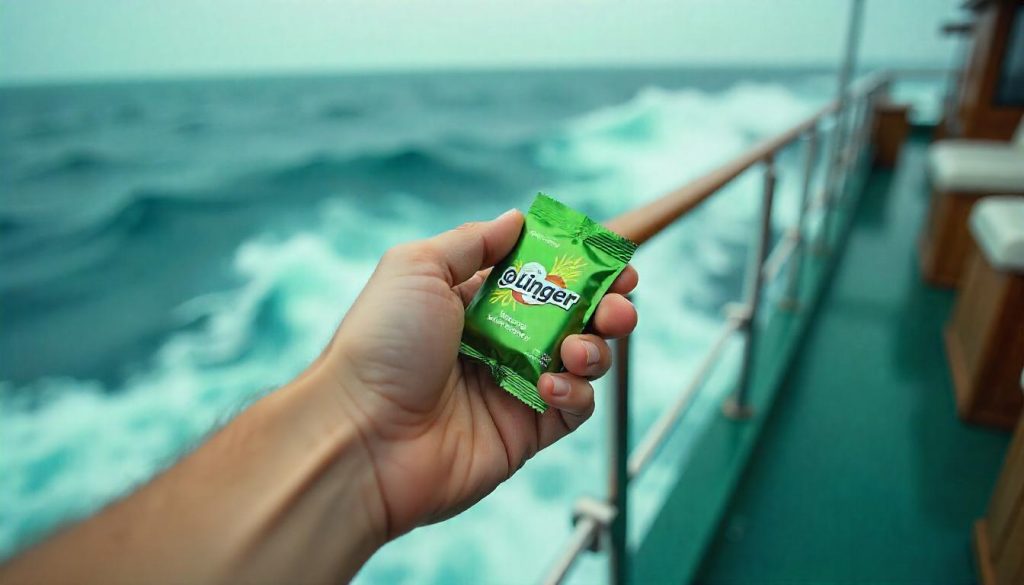A yacht charter promises an idyllic escape. You envision sun-drenched decks, turquoise waters, and unparalleled freedom. However, for some, seasickness can quickly overshadow the joy of being at sea. This common ailment, characterized by nausea, dizziness, and discomfort, can significantly diminish your voyage enjoyment. Fortunately, with preparation and understanding, managing seasickness on a yacht charter is entirely possible. This comprehensive guide offers practical tips and effective strategies. They help prevent and alleviate motion sickness. Thus, your time on the water will be as comfortable and memorable as you envision.
Understanding Seasickness on a Yacht Charter: The Basics
To effectively combat seasickness, it helps to understand its causes and how it manifests.
What Causes Seasickness?
Seasickness, or motion sickness, occurs when your brain receives conflicting signals about your body’s motion. Your eyes might see the stable yacht interior. However, your inner ear, responsible for balance, detects the rocking and swaying of the boat. This sensory mismatch confuses the brain, leading to unpleasant symptoms. While common, susceptibility varies greatly among individuals. Children, pregnant women, and those prone to migraines are often more susceptible. Furthermore, anxiety about getting seasick can sometimes exacerbate symptoms, creating a self-fulfilling prophecy.
Common Symptoms of Seasickness
The symptoms of seasickness on a yacht charter can range from mild discomfort to severe distress. Initial signs often include uneasiness, lightheadedness, and a general sense of malaise. This can quickly progress to cold sweats, pallor, increased salivation, and a strong urge to vomit. Dizziness, headaches, and fatigue are also frequently reported. Recognizing these early symptoms is crucial. Early intervention can often prevent the condition from worsening. Knowing what to look for allows for timely action.
Pre-Charter Preparations: Ensuring a Smooth Yacht Charter
Prevention is often the best cure for seasickness. Taking proactive steps before and during your yacht charter can significantly reduce your risk of developing seasickness on a yacht charter.
Choosing the Right Yacht and Route to Minimize Seasickness
Certain yachts and routes inherently minimize seasickness risk. Larger, heavier yachts tend to be more stable than smaller ones. Catamarans, with their twin hulls, generally offer superior stability compared to monohulls. This makes them an excellent choice for those prone to motion sickness. When discussing your charter, inform your broker about any concerns. They can recommend yachts with stabilization systems. Furthermore, choose routes in calmer waters. Sheltered bays, archipelagos, and coastlines with less open ocean exposure can offer smoother sailing conditions. Avoid areas known for rough seas during your travel period.
Consulting Your Doctor
Before your trip, consult your doctor about preventative medications. Several effective options are available, both over-the-counter and by prescription. Common over-the-counter choices include dimenhydrinate (Dramamine) and meclizine (Bonine). Prescription options like scopolamine patches (Transderm Scop) are highly effective for many. Your doctor can recommend the best option based on your medical history. They can also discuss potential side effects. It is vital to take preventative medication before symptoms start. They are far less effective once seasickness has set in. Plan to take the first dose several hours before boarding.
Packing Smartly
What you pack also influences your comfort. Loose, comfortable clothing made of breathable fabrics is advisable. Avoid tight waistbands or restrictive garments. Pack layers, as temperature fluctuations on deck can contribute to discomfort. Bring sunglasses to reduce glare; this can sometimes worsen symptoms. Finally, ensure easy access to any medications, ginger candies, or other remedies you plan to use. Keep them in a readily accessible bag, not buried in your main luggage.
During the Charter: Onboard Strategies for Seasickness Relief
Even with preparation, some individuals may still experience symptoms. Implementing these strategies during your charter can help manage and alleviate discomfort from seasickness on a yacht charter.
Focus on the Horizon
One of the most effective non-pharmacological remedies is to fix your gaze on a stable point on the horizon. This helps your brain reconcile visual input with the inner ear’s sensation of motion. Avoid reading, looking at screens, or focusing on objects inside the cabin. These actions exacerbate the sensory conflict. Sitting or standing in the yacht’s middle, where motion is least pronounced, can also be beneficial. Fresh air and a gentle breeze can also provide some relief.
Stay Hydrated and Eat Lightly
Dehydration can worsen seasickness. Drink plenty of water throughout the day. Avoid excessive alcohol consumption, as it contributes to dehydration and dizziness. Eat light, bland foods. Crackers, plain bread, dry cereal, and apples are often well-tolerated. Steer clear of greasy, spicy, or heavy meals. Also, avoid highly acidic foods or drinks that might upset your stomach. Small, frequent snacks are often better than large meals.
Leverage Natural Remedies for Yacht Nausea
Many people find relief using natural remedies. Ginger, in various forms, is widely praised for its anti-nausea properties. Pack ginger candies, ginger ale, ginger tea, or even fresh ginger to chew on. Peppermint can also have a soothing effect. Acupressure wristbands, like Sea-Bands, apply pressure to a specific point on the wrist. This point, Neiguan, is believed to alleviate nausea. While scientific evidence varies, many individuals report positive results. Experiment with these options to see what works best for you.
Seek Fresh Air and a Cool Environment
Being in a stuffy, warm environment can intensify feelings of nausea. Head to the open deck where you can get plenty of fresh air and feel the breeze. Sitting in a well-ventilated area can make a significant difference. Try to find a spot where you can see the horizon clearly. Avoid being in enclosed cabins for extended periods if you feel unwell. The lack of visual cues about motion can worsen symptoms.
Rest and Relaxation
Sometimes, the best remedy is simply to rest. Lie down in a comfortable position, ideally on your back with your head elevated slightly. Close your eyes. This helps reduce conflicting sensory input. If possible, try to sleep. Many people find that a short nap can significantly alleviate symptoms. Avoid focusing on your discomfort. Distract yourself with calming music or gentle conversation if you feel up to it.

What to Do If Seasickness Strikes on Your Yacht Charter
Despite all precautions, seasickness can still occur. Knowing how to react can help manage it effectively.
Don’t Hesitate to Vomit
If you feel the urge to vomit, do not try to suppress it. Vomiting often brings immediate, albeit temporary, relief. It’s a natural response as your body tries to expel what it believes is a toxin. Inform the crew if you need a bucket or assistance. Most yacht crews are very experienced in handling seasickness. They are prepared to help discreetly and compassionately.
Communicate with Your Crew
Your yacht crew is there to ensure your comfort and safety. If you start feeling unwell, inform them immediately. They can often provide practical advice. They might suggest a calmer anchorage. Or they can adjust the yacht’s speed or course to minimize motion. They are also trained in basic first aid. They can assist if symptoms become severe. Open communication is key to finding effective solutions.
Re-evaluate Your Activities
If seasickness persists, consider altering your plans for the day. Perhaps a day spent anchored in a calm bay with swimming and sunbathing is a better option. This beats a long passage in open water. Prioritize your well-being. A relaxed day might be all you need to recover. Then you can enjoy the rest of your charter. Remember, the goal is to enjoy your vacation.
Post-Seasickness Recovery
Once the motion stops, recovery is usually quick. However, some lingering effects might occur.
Gradual Reintroduction to Food
After an episode of seasickness, your stomach might be sensitive. Gradually reintroduce light, bland foods. Avoid anything heavy or overly rich for a few hours. Continue to hydrate well. Listen to your body and eat when you feel ready.
Learning from the Experience
If you experienced seasickness on a yacht charter, reflect on what might have contributed to it. Did you take medication early enough? Did you choose the right position on the yacht? This information can be invaluable for planning future yachting adventures. Many people find that subsequent trips are easier. Their body adapts, or they learn more effective personal strategies. Seasickness often lessens with repeated exposure.
A yacht charter offers an incredible opportunity for adventure and relaxation. While seasickness can be a concern, it shouldn’t deter you from experiencing the magic of the open sea. By understanding its causes, taking preventative measures, and employing effective management strategies, you can ensure that your seasickness on a yacht charter is a minor blip. It will not be a defining feature of your unforgettable voyage. Smooth sailing awaits!

 How to Handle Seasickness on a Yacht Charter">
How to Handle Seasickness on a Yacht Charter">
